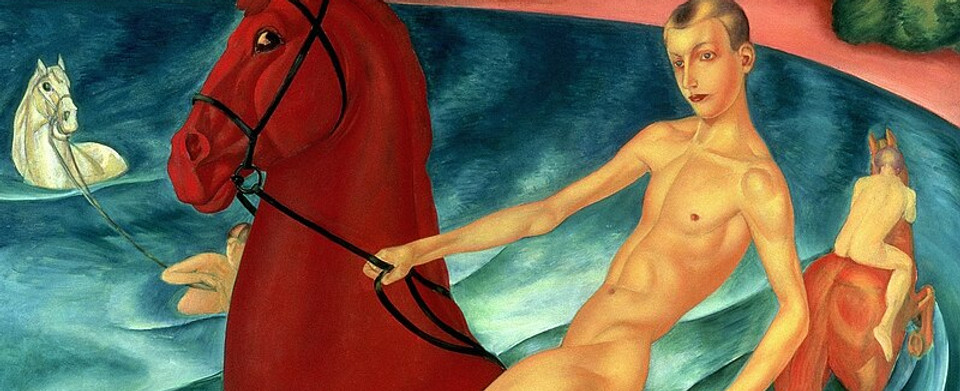
Ideological Realism
Art in Nazi Germany
Socialist realism
Soviet nonconformist art
Art in Nazi Germany
The Nazi regime in Germany actively promoted and censored forms of art between 1933 and 1945. Upon becoming dictator in 1933, Adolf Hitler gave his personal artistic preference the force of law to a degree rarely known before. In the case of Germany, the model was to be classical Greek and Roman art, seen by Hitler as an art whose exterior form embodied an inner racial ideal. It was, furthermore, to be comprehensible to the average man. This art was to be both heroic and romantic. The Nazis viewed the culture of the Weimar period with disgust. Their response stemmed partly from conservative aesthetics and partly from their determination to use culture as propaganda.
The Reich Chamber of Culture (Reichskulturkammer, abbreviated as RKK) was a government agency in Nazi Germany. It was established by law on 22 September 1933 in the course of the Gleichschaltung process at the instigation of Reich Minister Joseph Goebbels as a professional organization of all German creative artists. Defying the competing ambitions of the German Labour Front (DAF) under Goebbels' rival Robert Ley, it was meant to gain control over the entire cultural life in Germany creating and promoting Aryan art consistent with Nazi ideals.
Every artist had to apply for membership on presentation of an Aryan certificate. A rejected inscription de facto resulted in an occupational ban.
Adolf Ziegler
1892 – 1959
Adolf Ziegler
(16 October 1892 – 11 September 1959) was a German painter and politician. He was tasked by the Nazi Party to oversee the purging of what the Party described as "degenerate art", by most of the German modern artists. He was Hitler's favourite painter. He was born in Bremen and died in Varnhalt, today Baden-Baden

Adolf Ziegler, The Four Elements (Fire, Water and Earth, Air), before 1937 (Modern Art Collection, Pinakothek der Moderne, Munich)

Adolf Ziegler (1892-1959)

Adolf Ziegler (1892-1959)

Adolf Ziegler (1892-1959)

Adolf Ziegler (1892-1959)

Adolf Ziegler (1892-1959)

Adolf Ziegler (1892-1959)

Adolf Ziegler (1892-1959)

Adolf Ziegler (1892-1959)

Adolf Ziegler (1892-1959)

Adolf Ziegler (1892-1959)

Adolf Ziegler (1892-1959)
Ivo Saliger
1886 - 1987
Ivo Saliger
was an Austrian painter known for his academically painted nudes set within idyllic landscapes. Born on October 21, 1886 in Königsberg, Austrian-Silesia (now the Czech Republic), the artist went on to study at the Academy of Fine Arts in Vienna under Rudolf Jettmar. Saliger then began to integrate Neo-Classical techniques and Art Deco stylizations into his work during the 1920s and 1930s. He was lauded by the Nazi party, and Adolf Hitler himself had a collection of the artist’s work, which was regularly exhibited at the Great German Art Exhibitions held by the Third Reich. He died on January 14, 1987 in Vienna, Austria.
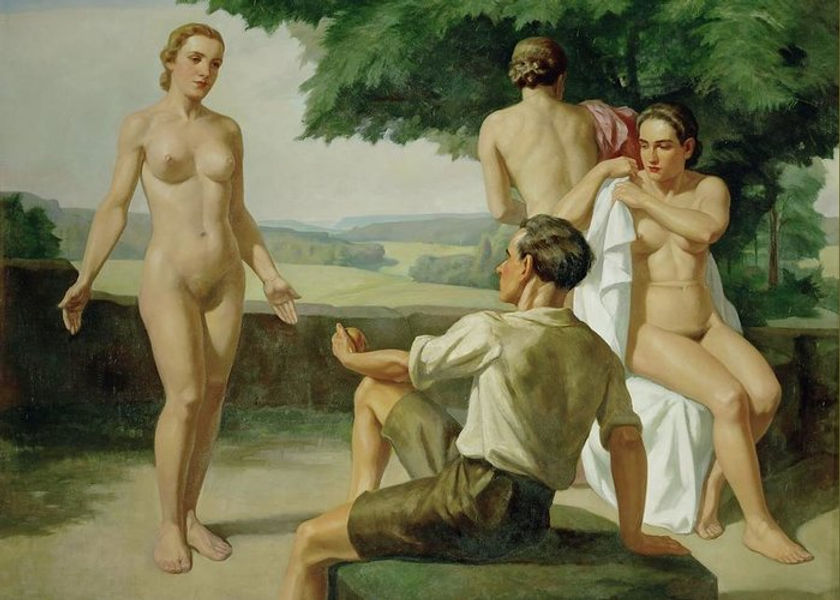
IVO SALIGER: THE JUDGMENT OF PARIS. 1939. Property of RFA

IVO SALIGER: Diana's rest. Around 1940 Canvas. is a painting by Ivo Saliger
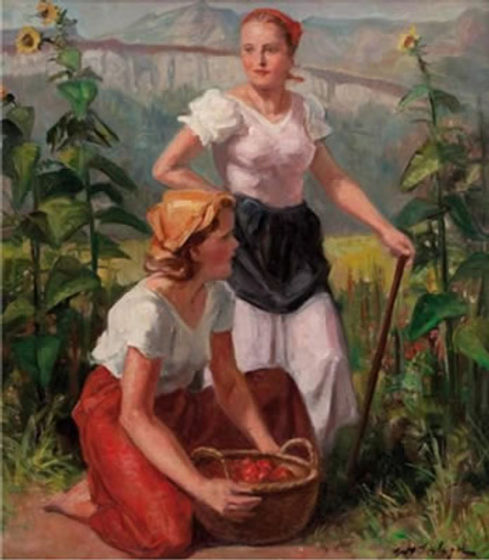
IVO SALIGER: ZWEI FRAUEN IM GARTEN
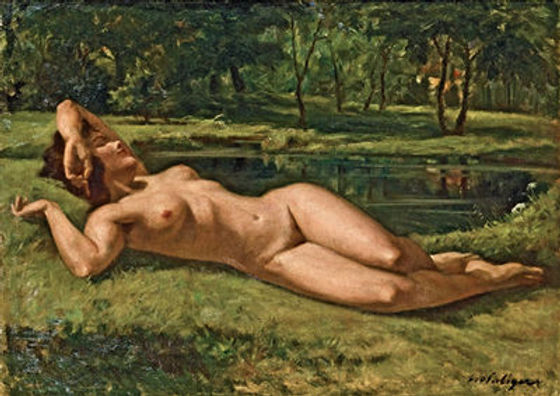
IVO SALIGER: LIEGENDER AKT

Ivo Saliger. Nude

IVO SALIGER: DREI GRAZIEN

IVO SALIGER:"AN DER WALDQUELLE" (1941)

Ivo Saliger
Liegender weiblicher Akt vor kleinem Teich
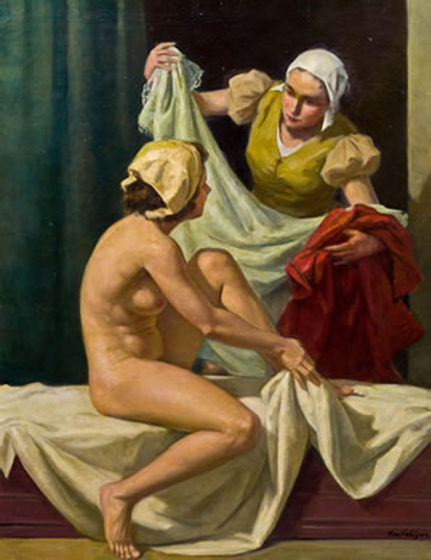
IVO SALIGER: NACH DEM BAD

Ivo Salinger — Nudes and the Death

Ivo Salinger — The Doctor, the Girl and the Death

Ivo Salinger — The Doctor, the Girl and the Death

Ivo Salinger — The Doctor and the Death

Ivo Salinger — The Doctor, the Girl and the Death
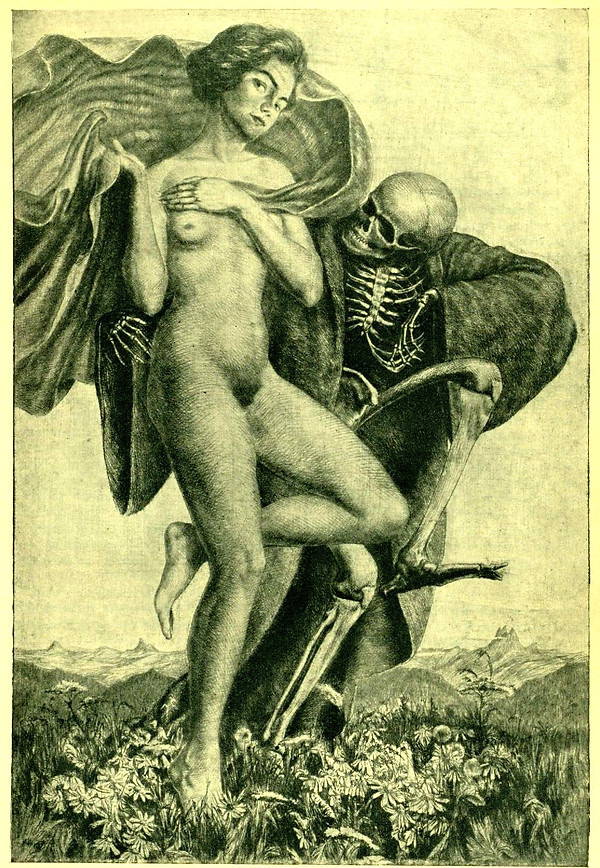
Ivo Salinger — ‘Der Treue Begleiter’ (The Loyal Companion), “Mocca”, #3, 1928

Ivo Saliger. Nude with peacock feather and monkey ca.1925-30
Oskar Martin-Amorbach
1897-1987
Oskar Martin-Amorbach (1897-1987)
Oskar Martin-Amorbach was born in Amorbach, Lower Franconia in 1897. Oskar was a German painter. He studied at the Munich Academy under Carl Johann Becker-Gundahl and Franz von Stuck. Oskar Martin attended the Royal School of Applied Arts in Munich from 1914. After completing his studies, he moved to Samerberg in Chiemgau and joined the artists' association ‘Die Welle’ [The Wave]. He became known to the broad public thanks to a fresco in the Munich Glaspalast (formerly Haus der Deutschen Kunst).
In 1939, he was awarded the title of professor. Starting in 1943, he was the professor of history painting at the Akademie der Bildenden Künste

Oskar Martin-Amorbach (1897-1987)

Oskar Martin-Amorbach (1897-1987)

Oskar Martin-Amorbach (1897-1987)

Oskar Martin-Amorbach (1897-1987)

Oskar Martin-Amorbach (1897-1987)

Oskar Martin-Amorbach (1897-1987)

Oskar Martin-Amorbach (1897-1987)
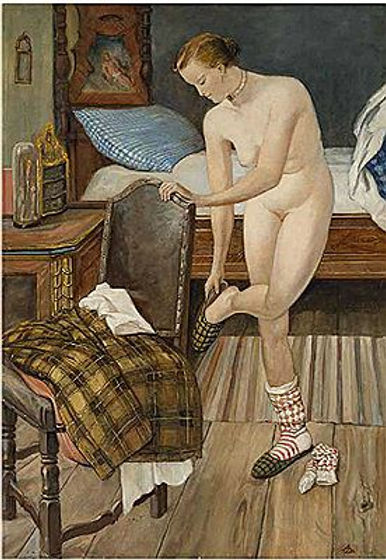
Oskar Martin-Amorbach (1897-1987)

Oskar Martin-Amorbach (1897-1987)

Oskar Martin-Amorbach (1897-1987)

Oskar Martin-Amorbach (1897-1987)

Oskar Martin-Amorbach (1897-1987)

Oskar Martin-Amorbach (1897-1987)

Oskar Martin-Amorbach (1897-1987)

Oskar Martin-Amorbach (1897-1987)

Oskar Martin-Amorbach (1897-1987)
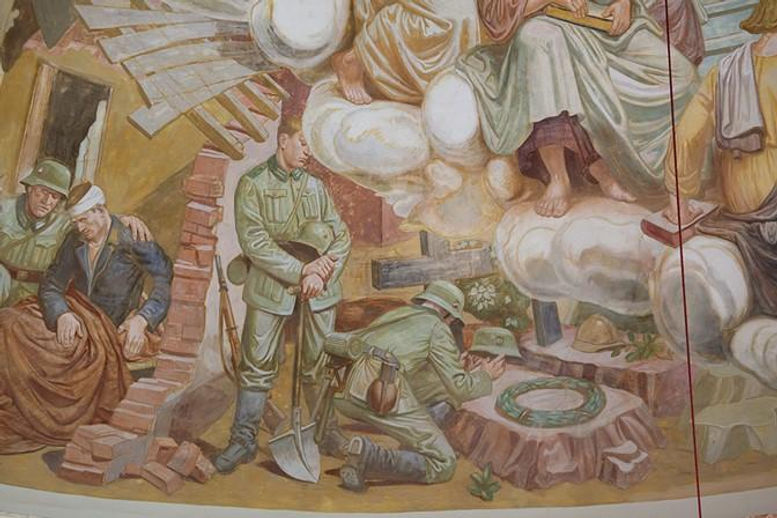
Oskar Martin-Amorbach (1897-1987)

Oskar Martin-Amorbach (1897-1987)

Oskar Martin-Amorbach (1897-1987)

Oskar Martin-Amorbach (1897-1987)

Oskar Martin-Amorbach (1897-1987)
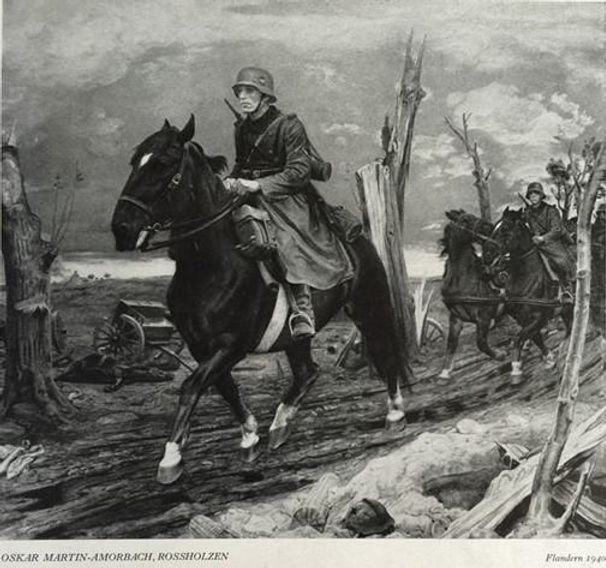
Oskar Martin-Amorbach (1897-1987)

Oskar Martin-Amorbach (1897-1987)

Oskar Martin-Amorbach (1897-1987)

Oskar Martin-Amorbach (1897-1987)

Oskar Martin-Amorbach (1897-1987)

Oskar Martin-Amorbach (1897-1987)
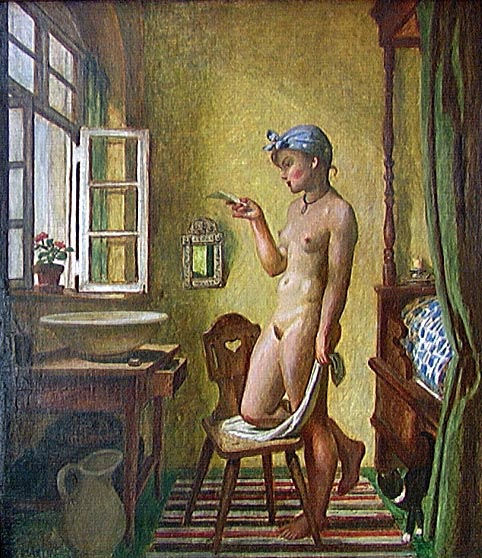
Oskar Martin-Amorbach (1897-1987)

Oskar Martin-Amorbach (1897-1987)

Oskar Martin-Amorbach (1897-1987)

Oskar Martin-Amorbach (1897-1987)

Oskar Martin-Amorbach (1897-1987)
Arno Breker
1900 – 1991
Arno Breker
(19 July 1900 – 13 February 1991) was a German architect and sculptor who is best known for his public works in Nazi Germany, where they were endorsed by the authorities as the antithesis of degenerate art. He was made official state sculptor, and exempted from military service. One of his better known statues is Die Partei, representing the spirit of the Nazi Party that flanked one side of the carriage entrance to Albert Speer's new Reich Chancellery.
After the fall of Nazi Germany in 1945 Breker continued to thrive professionally as a sculptor in the new West Germany.

Exhibition of the German sculptor Arno Breker at the Musée de l'Orangerie.

Arno Breker (1900 - 1991)

Arno Breker (1900 - 1991)

Arno Breker (1900 - 1991)

Arno Breker (1900 - 1991)
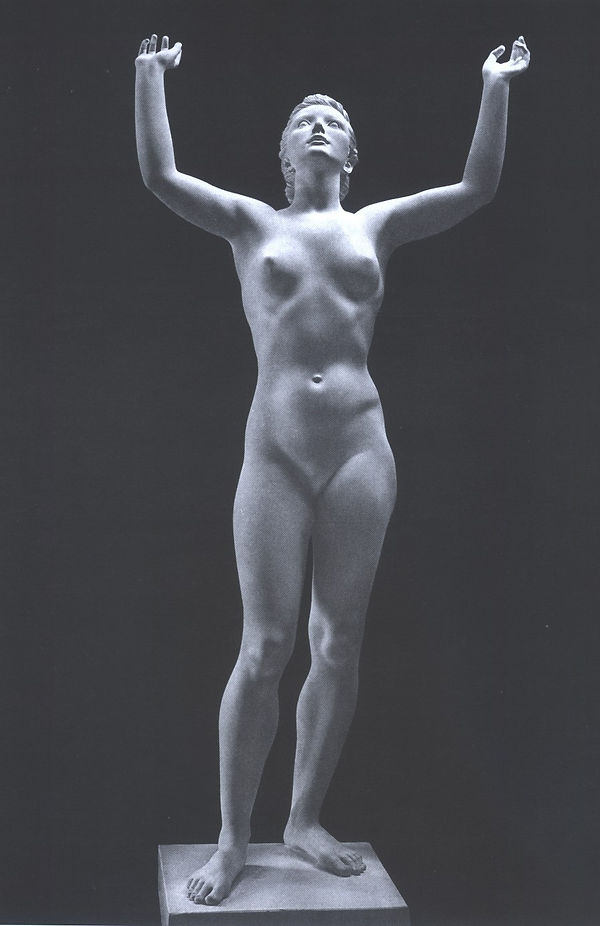
Arno Breker (1900 - 1991)

Arno Breker (1900 - 1991)
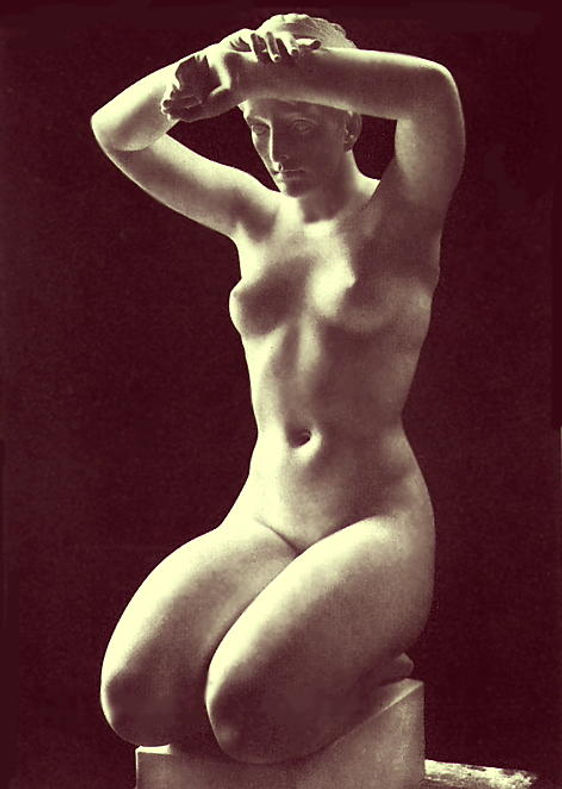
Arno Breker (1900 - 1991)

Arno Breker (1900 - 1991)
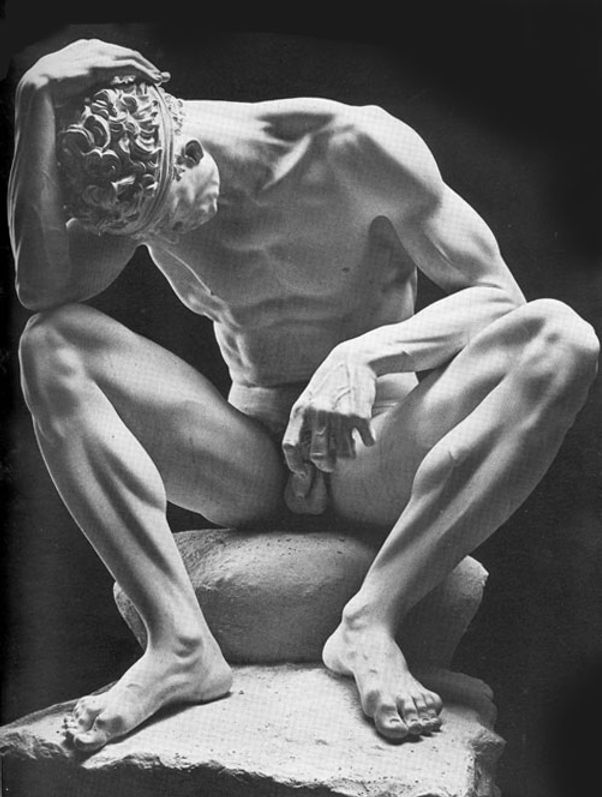
Arno Breker (1900 - 1991)

Arno Breker (1900 - 1991)

Arno Breker (1900 - 1991)

Arno Breker (1900 - 1991)

Arno Breker (1900 - 1991)

Arno Breker (1900 - 1991)

Arno Breker (1900 - 1991)

Arno Breker (1900 - 1991)

Arno Breker (1900 - 1991)

Arno Breker (1900 - 1991)
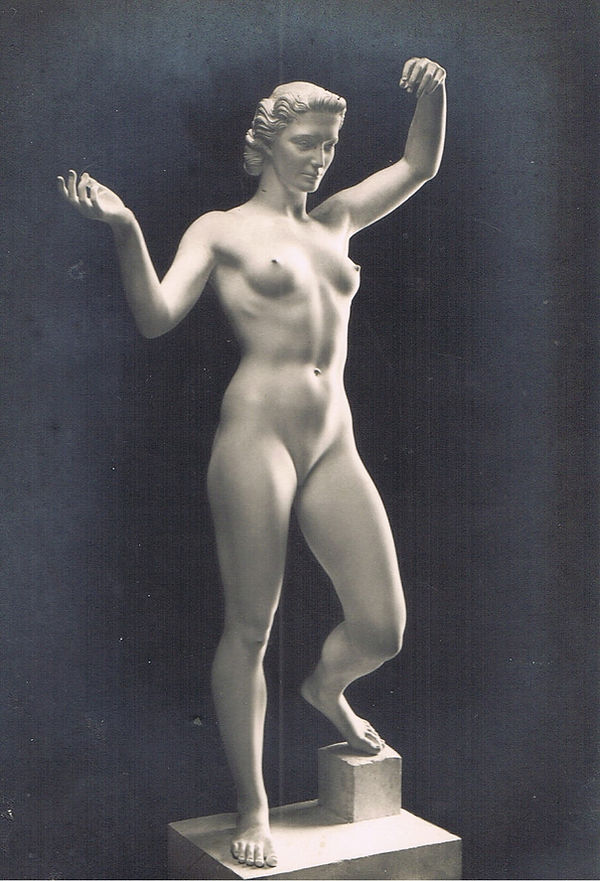
Arno Breker (1900 - 1991)
Socialist realism
is a style of idealized realistic art that was developed in the Soviet Union and was the official style in that country between 1932 and 1988, as well as in other socialist countries after World War II. Socialist realism is characterized by the depiction of communist values, such as the emancipation of the proletariat. Despite its name, the figures in the style are very often highly idealized, especially in sculpture, where it often leans heavily on the conventions of classical sculpture. Although related, it should not be confused with social realism, a type of art that realistically depicts subjects of social concern, or other forms of "realism" in the visual arts. Socialist realism was made with an extremely literal and obvious meaning, usually showing an idealized USSR. Socialist realism was usually devoid of complex artistic meaning or interpretation.
Socialist realism was the predominant form of approved art in the Soviet Union from its development in the early 1920s to its eventual fall from official status beginning in the late 1960s until the breakup of the Soviet Union in 1991. While other countries have employed a prescribed canon of art, socialist realism in the Soviet Union persisted longer and was more restrictive than elsewhere in Europe.
Isaak Brodsky
1884 – 1939
Isaak Brodsky
Isaak Izrailevich Brodsky (Russian: Исаа́к Изра́илевич Бро́дский, Ukrainian: Іса́к Ізраїльович Бро́дський; 6 January 1884 [O.S. 25 December 1883] – 14 August 1939) was a Russian painter and draughtsman of Jewish descent best known for his portrayals of Vladimir Lenin and other Soviet leaders, renowned as blueprint examples of the Socialist realist style.
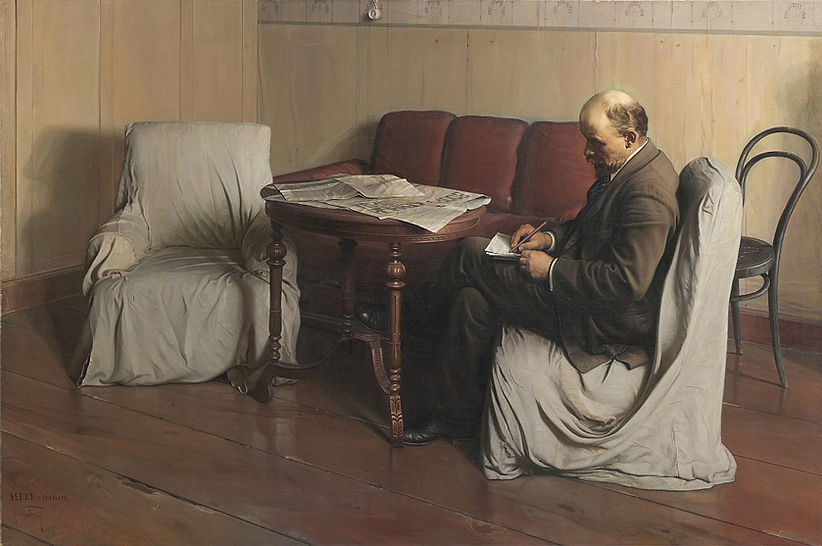
Isaak Brodsky. Lenin in Smolny, 1930

Isaak Brodsky. Portrait of Stalin, 1933

Isaak Brodsky. Lenin's Funeral, 1925

Isaak Brodsky. VI Lenin on a background of the Smolny. Oil. 1925

Isaak Brodsky. Portrait of AM Gorky. Oil. 1936

Isaak Brodsky. Lyubov Makarovna Brodskaya
Kuzma Petrov-Vodkin
1878 - 1939
Kuzma Sergeevich Petrov-Vodkin
(b Khvalynsk, Saratov province, 25 Oct 1878; d Leningrad [now St Petersburg], 15 Feb 1939).
Russian painter. He began his studies in the drawing and painting classes of F. Burov (1843–95) in Samara (1893–5), and he attended Baron Stieglitz’s school in St Petersburg from 1895 to 1897. He studied under Abram Arkhipov, Nikolay Kasatkin and Valentin Serov at the Moscow School of Painting, Sculpture and Architecture from 1897 to 1905 and at Anton Azbé’s school in Munich (1901). After working in various private studios in Paris between 1905 and 1908, he travelled to Constantinople (now Istanbul), Greece and Italy in 1905 and to Algiers in 1906. On his return to Russia, he held an exhibition in the editorial offices of the magazine Apollon in St Petersburg (1909). From 1911 to 1924 he exhibited with the WORLD OF ART group and from 1925 to 1928 with the FOUR ARTS SOCIETY OF ARTISTS. From the early 1910s Petrov-Vodkin’s work was influential in the artistic life of St Petersburg. He attempted to reconcile classical and modern trends. His style was formed under a wide range of influences, often seemingly incompatible: 19th-century Russian painters such as Aleksey Venetsianov, Aleksandr Ivanov and Mikhail Vrubel’, the artists of the Munich Secession, Ferdinand Hodler, Maurice Denis, Gauguin, Puvis de Chavannes, Matisse, the painting of Giovanni Bellini, early Russian frescoes and icons and Russian folklore and popular songs.

Petrov-Vodkin - "Bathing of a Red Horse"

Petrov-Vodkin - Petrograd Madonna

Petrov-Vodkin - Motherhood

Petrov-Vodkin - On the Line of Fire

Petrov-Vodkin - Dream

Petrov-Vodkin - Madonna

Petrov-Vodkin - Madonna

Petrov-Vodkin
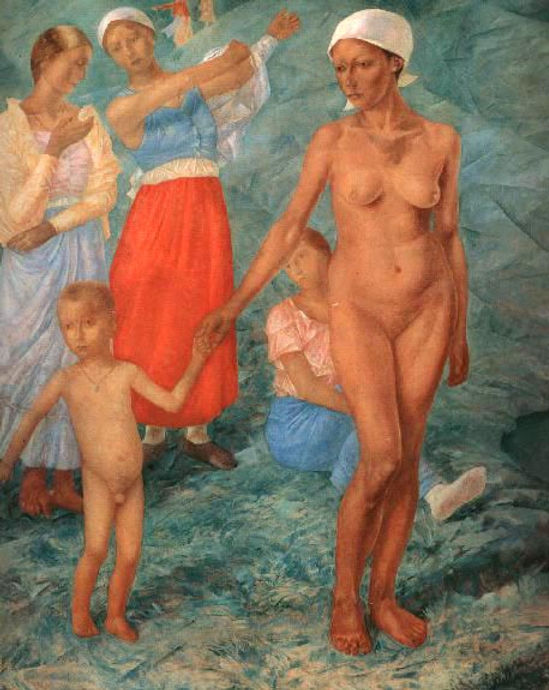
Petrov-Vodkin
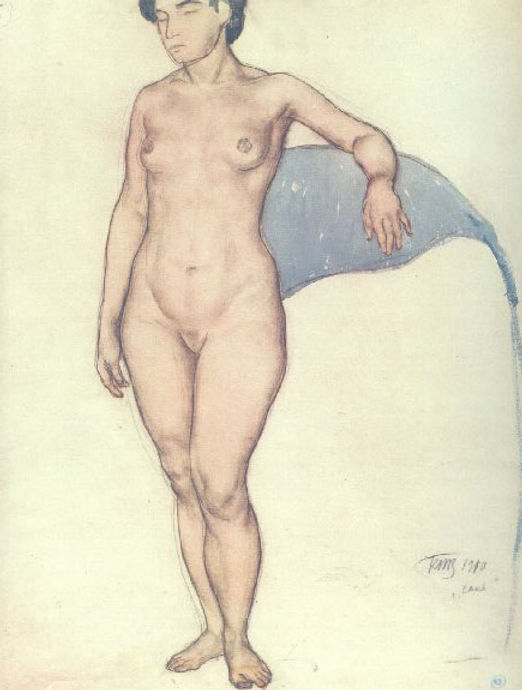
Petrov-Vodkin
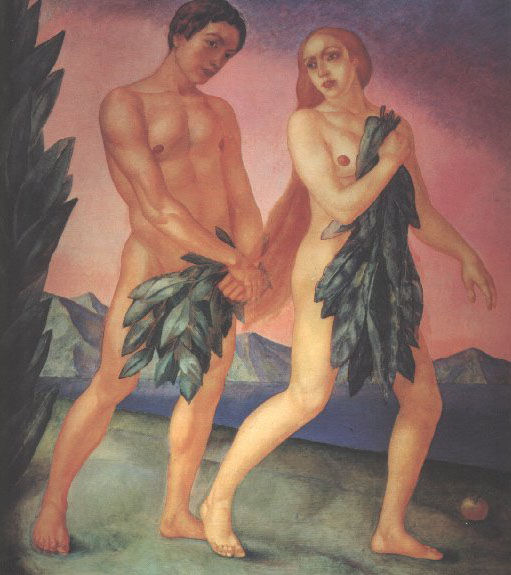
Petrov-Vodkin

Petrov-Vodkin

Petrov-Vodkin

Petrov-Vodkin

Petrov-Vodkin
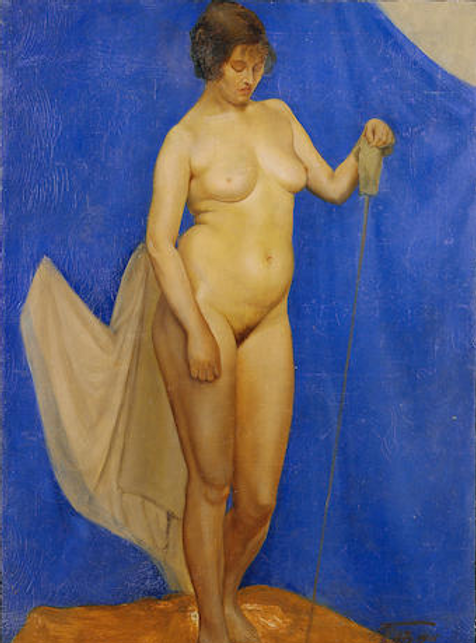
Petrov-Vodkin

Petrov-Vodkin
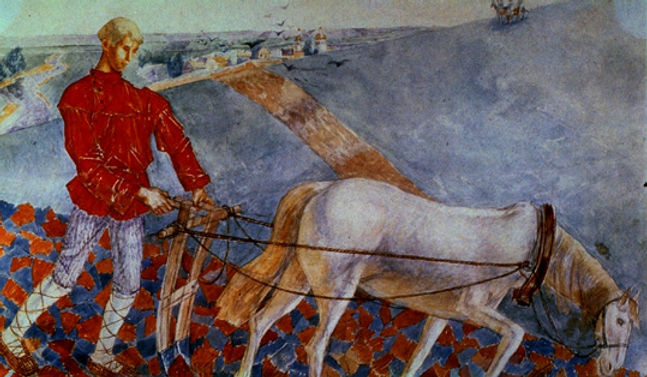
Petrov-Vodkin

Petrov-Vodkin

Petrov-Vodkin - Lenin

Petrov-Vodkin

Petrov-Vodkin

Petrov-Vodkin
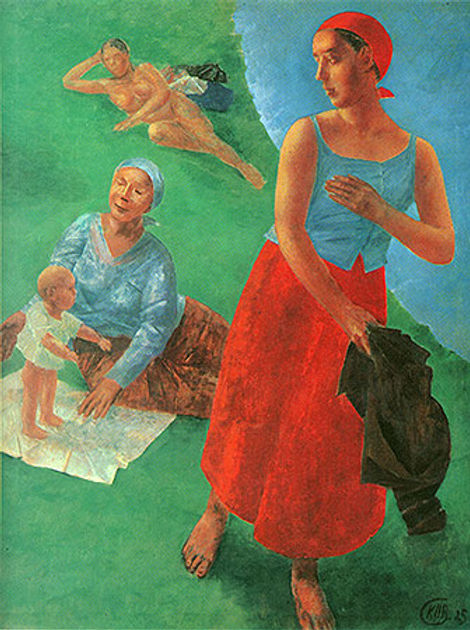
Petrov-Vodkin
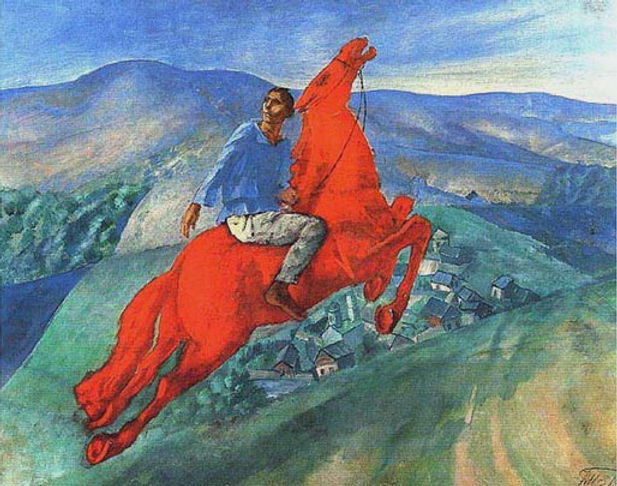
Petrov-Vodkin
Aleksandr Deyneka
1899 – 1969
Aleksandr Deyneka
Aleksandr Aleksandrovich Deyneka (May 20, 1899 – June 12, 1969) was a Soviet and Russian painter, graphic artist and sculptor, regarded as one of the most important Russian modernist figurative painters of the first half of the 20th century. His Collective Farmer on a Bicycle (1935) has been described as exemplifying the socialist realist style.

Deineka. Self-portrait

Deineka. Collective Farmer on a Bicycle (1935)

Deineka. "The Defense of Petrograd", 1928

Deineka.

Deineka.

Deineka.

Deineka.

Deineka.

Deineka.

Deineka.

Deineka.

Deineka.

Deineka.

Deineka.

Deineka.

Deineka.

Deineka.

Deineka.

Deineka.

Deineka.

Deineka.

Deineka.

Deineka.

Deineka.

Deineka.

Deineka.

Deineka.
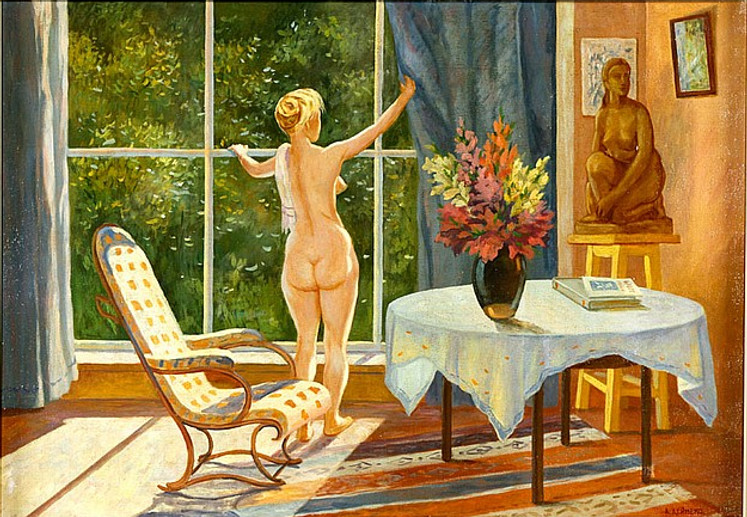
Deineka.

Deineka.

Deineka.

Deineka.

Deineka.

Deineka.

Deineka.

Deineka.

Deineka.

Deineka.

Deineka.

Deineka.

Deineka.

Deineka.

Deineka.

Deineka.

Deineka.

Deineka.

Deineka.

Deineka.

Deineka.
Ilya Kabakov
1933 – 2023
Soviet nonconformist art
Soviet nonconformist art was Soviet art produced in the former Soviet Union outside the control of the Soviet state started in the Stalinist era, in particular, outside of the rubric of Socialist Realism. Other terms used to refer to this phenomenon are Soviet counterculture, "underground art" or "unofficial art".
THE DEPLORABLE FAILURE OF THE SOVIET UTOPIA
Is this art or a construction site? Visitors to the Georges Pompidou Center can’t help but pose the question when they see the large stockade built of boards in the museum’s forum. With This Is Where We Live, the Russian artist Ilya Kabakov has created his largest installation yet. Two stories high, with an area of 19,260 square feet, it has the scaffolding and shacks of a monumental, abandoned construction site. Each of the shacks is a mini-installation of its own, with a kitchen, bedroom, and so on. The work refers, of course, to the collapse of the communist dream and to the desperate daily lives of Russians, while at the same time suggesting the precariousness of all civilizations, as do all the works that have make Kabakov famous since the 1980s.Born in 1933 in Dnepropetrovsk, he was a major figure in Moscow’s underground artistic circles and introduced Conceptual Art to the Soviet Union. For many years, he supported himself by illustrating children’s books. In 1985, he began to exhibit in Europe and soon became known for his environments, which showed the gap between the Soviet ideal and the mediocre lives of the people. But his work is ambiguous enough to be more than just a political denunciation.
Kabakov represented the Commonwealth of Independent States at the Venice Biennale in 1993 with his installation The Red Pavilion. For the past three years, he has been living in New York, where he is preparing for the end of October a “musical phantasmagoria,” in which dancers will evolve in fly costumes in front of a stage set depicting a communal kitchen.

ILYA KABAKOV:
THE MAN WHO TOOK OFF INTO SPACE.
1989. Paris. MNAM.

Ilya Iosifovich Kabakov
(September 30, 1933 – May 27, 2023) was a Russian–American conceptual artist, born in Dnipropetrovsk in what was then the Ukrainian SSR of the Soviet Union. He worked for thirty years in Moscow, from the 1950s until the late 1980s. After that he lived and worked on Long Island, United States.
Ilya Iosifovich Kabakov was born on September 30, 1933, in Dnipropetrovsk, Ukrainian Soviet Socialist Republic. His mother, accountant Bertha Judelevna Solodukhina, and his father, locksmith Iosif Bentcionovitch Kabakov, were Jewish. Ilya was evacuated during World War II to Samarkand with his mother. There he started attending the school of the Leningrad Academy of Art which was evacuated to Samarkand. His classmates included the painter Mikhail Turovsky.
After the World War II his family moved to Moscow. From 1945 to 1951, he studied at the Moscow Art School; in 1957 he graduated from V.I. Surikov State Art Institute, Moscow, where he specialized in graphic design and book illustration.

ILYA KABAKOV:
THE MAN WHO TOOK OFF INTO SPACE.

ILYA KABAKOV:
THE MAN WHO TOOK OFF INTO SPACE.

ILYA KABAKOV:
THE MAN WHO TOOK OFF INTO SPACE.

The Toilet
Ilya Kabakov
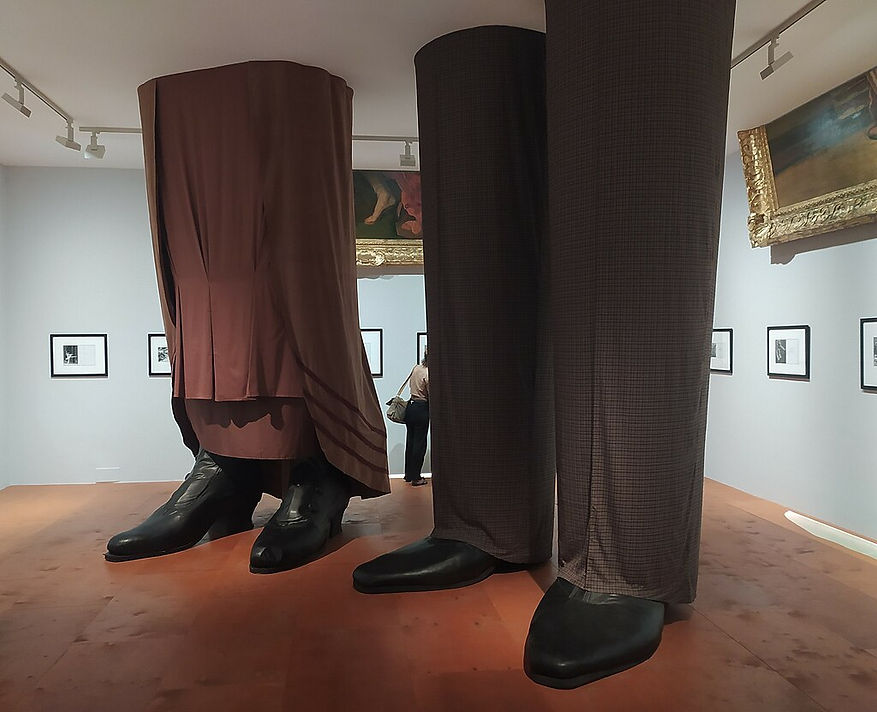
ILYA KABAKOV:
Tomorrow We Fly, Tel-Aviv Museum of Art.

ILYA KABAKOV:
HOLIDAY

ILYA KABAKOV:
HOLIDAY

ILYA KABAKOV:
HOLIDAY

ILYA KABAKOV:
HOLIDAY

ILYA KABAKOV

ILYA KABAKOV
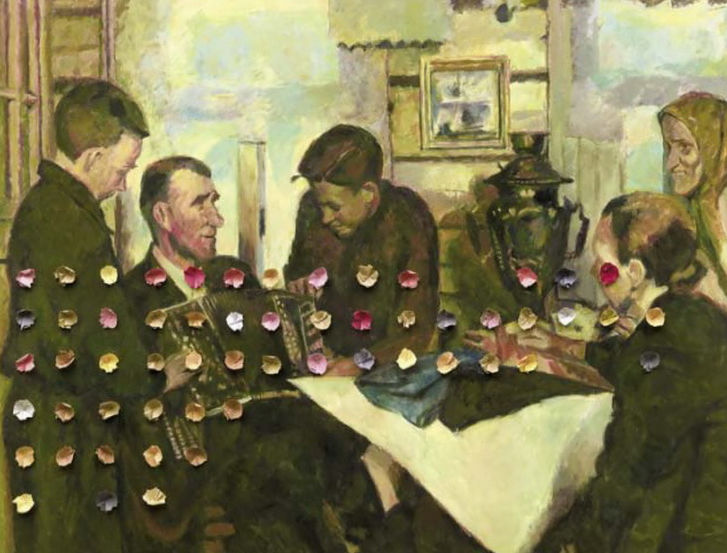
THE NEW ACCORDION
Ilya Kabakov

ILYA KABAKOV

ILYA KABAKOV

ILYA KABAKOV

ILYA KABAKOV

ILYA KABAKOV

ILYA KABAKOV

ILYA KABAKOV
Vitaly Komar b.1943
Alexander Melamid b.1945
Komar and Melamid
Kómar and Melamíd is a tandem team of Russian-born American conceptualist artists Vitaly Komar (born 1943) and Alexander Melamid (born 1945). In an artists' statement they said that "even if only one of us creates some of the projects and works, we usually sign them together. We are not just an artist, we are a movement." Both artists were born in Moscow, but emigrated to Israel in 1977 and subsequently to New York in 1978.
Komar & Melamid's first joint exhibition, Retrospectivism, was held at the Blue Bird Cafe in Moscow, 1967. The following year, they joined the youth section of the Moscow Union of Artists and began teaching art. In 1972, Komar & Melamid founded a movement they called Sots Art, a unique version of Soviet Pop and Conceptual Art that combines the principles of Dadaism and Socialist Realism." In 1974, they were arrested during a performance (in a Moscow apartment) of Art Belongs to the People. Later that year, their Double Self-Portrait (similar to dual portraits of Lenin and Stalin) was destroyed by the Soviet government, along with works by other nonconformist artists, at what became known as the Bulldozer Exhibition (because bulldozers were used to destroy the artwork, which had been displayed in an open-air setting).
In 1976, Komar & Melamid's work became more widely known. Ronald Feldman Fine Arts, New York, hosted their first international exhibition, but Soviet authorities denied them permission to attend. In 1976, they also made their first attempt at emigrating, but permission was denied. In response, they created their own country, "Trans-State," complete with passports and a constitution. In 1977, they received permission to join relatives in Israel. In 1978, they moved to New York; in the same month, their first museum exhibition opened at the Wadsworth Atheneum in Hartford, Connecticut.
Throughout the 1970s, Komar & Melamid also worked in a style they called "Post-Art," pioneering the use of multi-stylistic images, prefiguring the eclectic combination of styles in post-modernism, which became popular in the 1980s. They collaborated on various conceptual projects, ranging from painting and performance to installation, public sculpture, photography, music, and poetry. In one such performance, they established a corporation, Komar & Melamid, Inc., that had as its purpose "the buying and selling of human souls." They bought several hundred souls, including Andy Warhol's (who sold it to them for free), which was smuggled into Russia and then sold for 30 roubles.
Melamid moved to New Jersey in 1980. He continued to work with Komar in New York. In 1981, their Portrait of Hitler was slashed by an ex-Trotskyist disc jockey in Brooklyn. They did not repair the work, considering the attacker a co-author.
Ronald Feldman hosted the exhibition Sots Art in 1982, which was a commercial and critical success. In 1983, the Museum of Modern Art and the Metropolitan Museum of Art purchased paintings. From 1981 to 1983, they continued to develop Sots Art in the series Nostalgic Socialist Realism, and from 1984 to 1990 they further developed Post-Art in the Diary Series, Anarchistic Synthesis Series, and Bayonne, N.J. Series.
Throughout the 1980s, many prominent writers and critics discussed their work, and they were invited to participate in numerous exhibitions. They were the first Russian artists to receive funding from the National Endowment for the Arts. They were also the first Russian artists to be invited to Documenta (Kassel, then in West Germany, 1987).
Komar & Melamid created their first public art sculpture in 1986, a bronze bust of Joseph Stalin, which was installed in the red light district of The Hague, Netherlands. In 1988, they became US citizens. In 1989, a monograph about them, written by Carter Ratcliff, was published by Abbeville Press.
In the early 1990s, Komar & Melamid created two icons for the Holy Rosary Church in Jersey City. In 1992, they began the series Monumental Propaganda, in response to the destruction of Socialist Realist monuments in Russia. At Komar & Melamid's invitation, more than 200 Russian and Western artists created projects for the preservation of monuments. Prolific press coverage of the project forestalled destruction of monuments in Russia.
From 1994 to 1997, the artists worked on the series People's Choice, whereby they created the "most wanted" and "least wanted" paintings of various countries based on the results of surveys conducted by professional polling companies. The book, Painting by Numbers: Komar & Melamid's Scientific Guide to Art, published in 1997, explains the statistical underpinnings of the polling process and provides the results of each country's preferences. Komar & Melamid used the same process in 1996–1997 in a collaboration with composer Dave Soldier to create The People's Choice Music, consisting of "The Most Wanted Song" (a love song with low male and female vocals, of moderate duration, pitch, and tempo) and "The Most Unwanted Song" (in part: an operatic soprano raps over cowboy music featuring least-wanted instruments bagpipes and tuba while children sing about holidays and advertise for Wal-Mart).

Vitaly Komar and Alexander Melamid
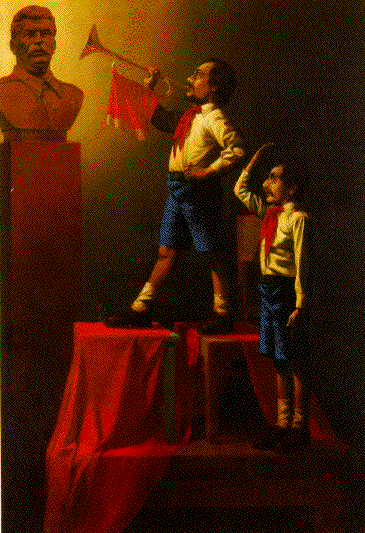
Kómar and Melamíd.
Vitaly Komar and Alexander Melamid

Kómar and Melamíd
The Origins of Socialist Realism from the series 'Nostalgic Socialist Realism',

Kómar and Melamíd
Stalin and the Muses.

Kómar and Melamíd
Stalin in Front of The Mirror

Kómar and Melamíd

Kómar and Melamíd
Yalta Conference

Kómar and Melamíd
Lenin Lived, Lenin Lives, Lenin Will Live.

Kómar and Melamíd

Kómar and Melamíd
Lost Paradise (Scene from Russian Life),

Kómar and Melamíd
Alexander the Great
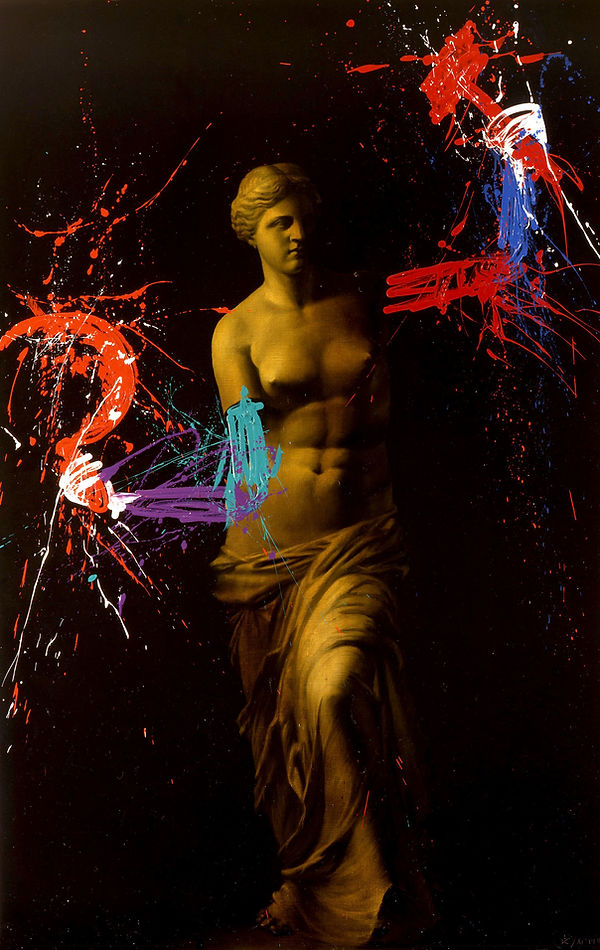
Kómar and Melamíd
Melamid. Venus deMilo

Kómar and Melamíd
Skyscraper

Kómar and Melamíd
The Stalin Monument

Kómar and Melamíd
The Wings Will Grow

Kómar and Melamíd
Our Way of Life